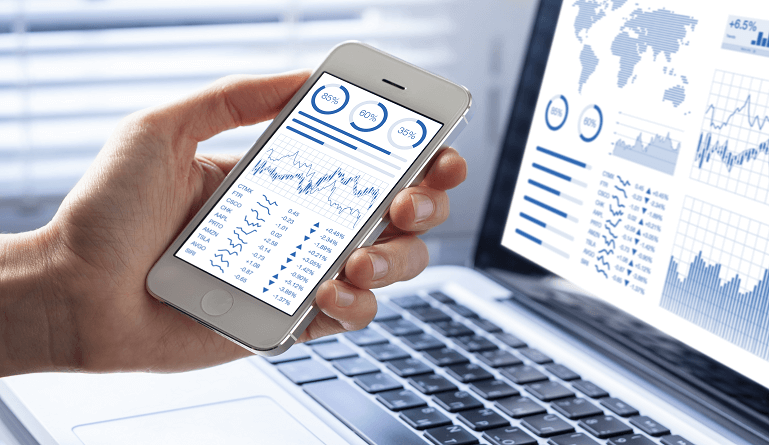It has been an exciting year for martech. When we started 2022, 37% of industry professionals felt confident, 31% were hopeful, and 24% felt excited about their chances of marketing success. And, throughout these last few months, we have seen some game-changing shifts – like the rise of generative AI, which could transform the creative process, and the Twitter buyout, with a significant impact on social media reach. What’s next on the road ahead? As we begin the new year, it is time to take stock of where you stand – and what you could do better! The best way to achieve this is by measuring the right marketing metrics.
Understanding the Meaning of Marketing Metrics
Marketing metrics are quantifiable data (numbers, percentages, and so on.) that are often evaluated by marketers or agencies in order to demonstrate and evaluate the efficacy of the campaigns across all marketing channels. These KPIs are often provided with charts, tables, and infographics in a marketing report as well as a dashboard. They are often presented in a quarterly, monthly, or weekly report to provide sufficient data for statistical analysis.
Top 23 Marketing Metrics for 2023: A Checklist for Marketers
Here are the top metrics that you need to measure in 2023. They give insights into your performance and ROI, as well as any untapped opportunities. Next year, make sure to track:
1. Social media growth
Growth is a measure that indicates the change in the number of followers over a certain time period. Instagram displays growth as an independent measure. For Facebook and Twitter, monthly growth is calculated by subtracting the current follower count from the count from the prior month.
2. Engagement rate
Engagement is crucial; you want your customers to interact with your brand. Additionally, this includes appreciating, discussing, subscribing to, and sharing your work — a.k.a., your brand, product, or service. This marketing statistic will help you in monitoring your organic social media activity and determine which posts performed best.
3. Organic traffic
Organic traffic is excellent for one very straightforward reason: it is free. This traffic is generated either by search engines or by individuals who are familiar with your brand and visit your site directly. Regardless, it indicates that your website is being seen, and your brand image has definitive traction.
4. Traffic per channel through multi-channel attribution
Multi-channel attribution is the process of determining which of your marketing channels lead to, and generate the most sales, and then attributing the appropriate amount of recognition to those channels based on their performance within that specific sales cycle.
5. Referral traffic
Referral traffic estimates the volume of site visitors referred to your products from an external source. By illustrating the breadth of your brand awareness, you may acquire insights into how your product is pushed/advertised via social media as well as organic search.
6. Keyword ranking
Keyword rankings allow you to determine the phrases you currently rank for, in search engines and which keywords the content marketing team should prioritize. You may use Google Search Console, SEMrush, and Keyword.com to monitor data such as keyword position, click-through rate, etc.
7. Google’s quality score
Google introduced the quality score KPI to evaluate the performance and relevance of your advertisement content. It is a measure of the quality of your advertising and marketing campaigns, keywords, and landing sites. Greater ad quality may result in reduced costs and better ad placements.
8. Average page views per session
This marketing indicator measures the pages a visitor views during a single session on your website. More pages per session indicate that site visitors are strongly engaged with your content and are likely to complete the required/desired action.
9. Bounce rate
Bounce rate is the proportion of site visitors who view a single page and then leave the site. A high bounce rate shows that your site’s information, content, or offerings are not retaining visitors. This might ultimately result in a gradual collapse of your sales funnel.
10. Engaged time spend on the web
You must determine if website visitors are actively engaged or just viewing your information in an idle tab. Tracking engaged time enables you to determine how long people are actively focusing on your material and, consequently, how important that material is to your core demographic or target customer base.
11. Email open rates
How many potential customers opened your email? This measure gives you an accurate indication of whether or not your subject line is effective and whether or not your target customer base is intrigued by what you offer them. You should also monitor the number of subscribers who have unsubscribed to further understand your audience.
12. Click through rate
CTR is the percentage of calls-to-action (CTA) clicks to the number of leads who merely viewed the website, emails, or social media advertising. CTAs, unlike shares, likes, and comments, are designed to advance leads farther down the conversion funnel.
13. CTR of internal links
If your material has inbound links to register at, for a free trial, purchase a product, etc., it is crucial to monitor the click-through rate (CTR) on such pages. The greater the CTR of your internal links, the greater the number of individuals who begin a free trial or purchase a product.
14. Cost per acquisition
CPA is the amount spent to acquire one new client. This varies as per a specific campaign, channel, or even season. Then, it is determined by dividing your overall marketing expenditure (campaign cost) by the number of customers obtained (conversion).
15. CLV or Customer Lifetime Value
CLV refers to the amount of revenue a typical customer will generate for your business during their lifetime. You could calculate the CLV by aggregating all of your revenue and dividing it by the number of consumers you’ve ever had.
16. Ratio of CLV to CAC
The ratio of your customer lifetime value (CLV) to the cost of customer acquisition (CAC) is a crucial indicator for gauging the sustainability of your organization. You should focus on maximizing the ratio by raising your CLV and/or minimizing your CAC.
17. Lead-to-customer conversion
If you halt at lead generation, you are missing a vital piece of the puzzle: the number of leads that convert into customers. This number might suggest whether the sales force requires a greater quantity of leads, leads of higher quality, or additional sales-supporting materials.
18. Ratio of MQL to SQL
Marketing Qualified Leads (MQLs) are interested prospects at the bottom of the sales funnel. Sales Qualified Leads (SQLS) are prospective customers determined by sales to be ready for direct communication. This ratio is an excellent measure of sales pipeline integrity.
19. Net Promoter Score (NPS)
NPS is an all-encompassing indicator that indicates whether customers would recommend your business to friends and family. If this figure is high or at least climbing, your brand’s reputation is strengthening. It indicates the ratio of brand advocates to opponents.
20. MROI or Marketing Return on Investment
It is essential to analyze the success and impact of your marketing initiatives by contrasting Marketing Return on Investment to its cost. Using MROI, you may determine which marketing activities enhance the business and which jeopardize its success.
21. Sales pipeline velocity
A core B2B marketing KPI, sales velocity, measures the rate at which you generate revenues. The sales pipeline velocity indicates the rate at which leads move through your pipeline and the amount of value customers deliver to your organization over a specific time period.
22. Cart abandonment rate
The shopping cart abandonment rate measures the proportion of users that placed an item in their online shopping cart but did not complete the transaction (versus those that did). The typical desertion rate is slightly around 70%; therefore, anything beyond this is a cause for concern.
23. Revenue per promo code
Using promo codes with tracking links can help your team figure out how people heard about your campaign and which demographics signed up. By giving out promo codes, you can get more specific information about who converted through a campaign and the revenues they brought in.
Conclusion
Finally, keep in mind that the type of marketing metrics can vary depending on the channel, campaign period, and the nature of your business. For example, the metrics necessary to measure mobile marketing outcomes will be different from the web or e-commerce metrics. Also, make sure to read up on the latest marketing trends for 2023 to know which technologies to implement, so that you can access the latest and most relevant data.






